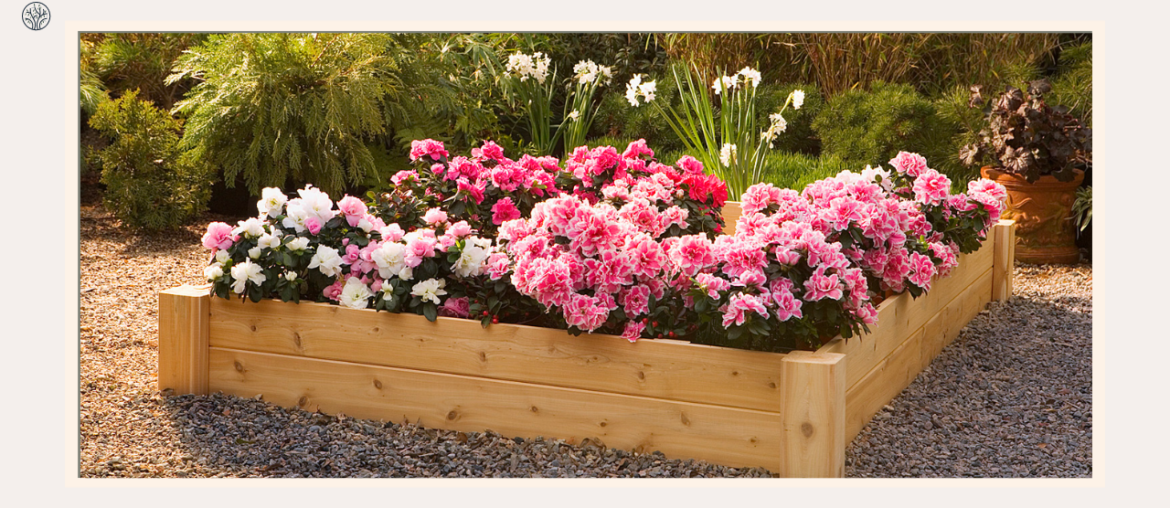Amidst the cold busy city life, having some flowers around can significantly change the mood and vibe of your living space. Flowers have meaning and can communicate our feelings and emotions in a way that words fail to. However, to grow flowers in an urban context, you need raised garden beds. The thing is, not all flowers are suitable for planting in raised beds. In this article, let’s explore some easy-to-grow flower options that can be planted in raised garden beds and thrive throughout the season.
Why Plant Flowers in Raised Garden Beds?
In an article about building raised garden beds, we have mentioned the incredible benefits of this growing solution in terms of soil quality and optimal drainage. When it comes to growing flowers, these benefits are even more obvious. Using a raised bed ensures well-draining soil, thus a better growing environment for the flower’s root systems.
Also, due to the fact that the soil in your raised beds is separated from the surrounding ground, its temperature is usually warmer. This gives you the option of planting flowers earlier than the normal growing season.
Besides these specific benefits when growing flowers, you can also enjoy all the typical benefits of a raised garden bed, for example:
- You can plant your flowers anywhere: backyard, rooftop, front door, or even by the window, the versatility of raised garden beds allows for easier placement and access to watering, weeding, etc.
- You have complete control over the use of the soil: This ensures the best soil quality, essential nutrients, and the right pH levels for your flowers.
- Raised garden beds are effective at protecting against pests, weeds, and diseases.
With such advantages, now you probably understand why we should grow in a raised garden bed, especially flowers. To move on, it’s time to take a look at some of the best flower recommendations that you can consider for your future flower garden.
Best Flowers To Plant In Raised Garden Beds: Top 10 Picks
Marigolds
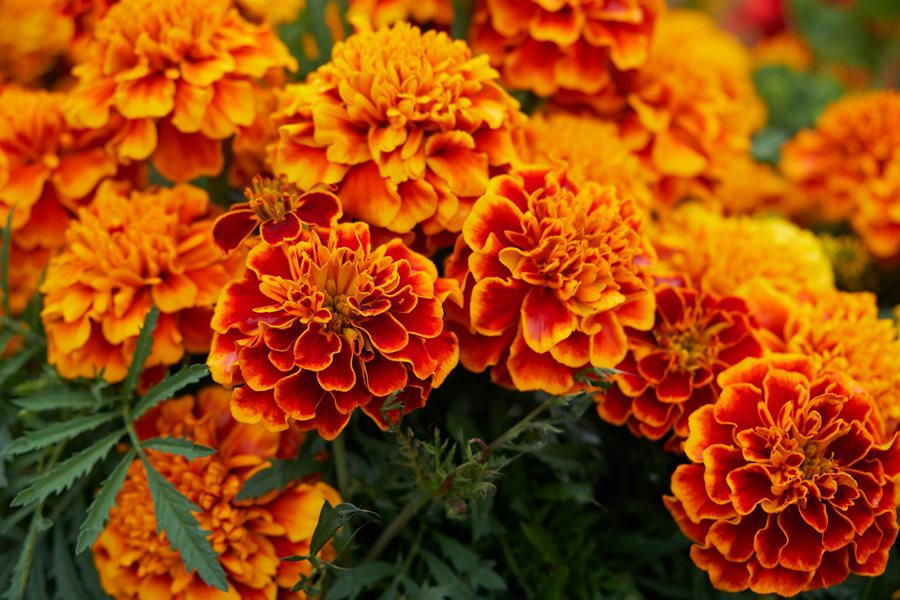
Marigolds are popular for raised garden beds for a reason. They can brighten up spaces with vibrant shades including orange, yellow, and mahogany. Besides their attractive appearance, marigolds are also beneficial when it comes to companion planting. They produce a pungent fragrance that attracts bees and other beneficial pollinators, as well as protect your other plants from insect pests with their special chemicals. Surprisingly, marigolds are also edible flowers, making them a very versatile addition to your garden.
Regarding care, you can place your marigolds anywhere in your garden with full or partial sunlight. Whether it’s sunny or shady, your marigolds will still thrive.
You don’t need frequent watering. Marigolds only need water when the soil is dry and should only be watered at the base. Make sure that your raised beds drain well, and everything will be fine.
Petunias
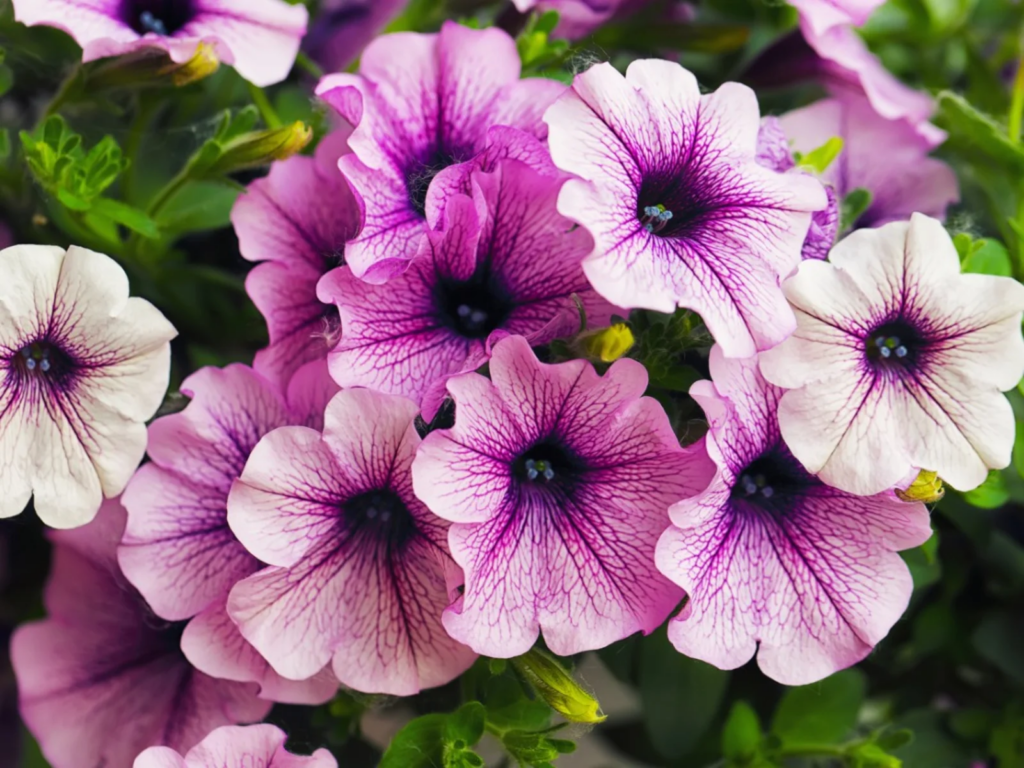
Petunias are another fantastic addition to suit many raised flower bed ideas, especially metal and vertical garden ideas. With their wide, ruffled petals and an array of colors, petunias create a mesmerizing visual display. Pink, purple, white, and yellow varieties are commonly found, offering plenty of options to suit your garden’s color scheme.
Moreover, one of the most appealing aspects of petunias is their attractiveness to pollinators. They attract pollinators like bees and hummingbirds, promoting a thriving ecosystem in your garden.
To ensure vibrant and healthy blooms, plant petunias in well-drained soil with ample sunlight. Regular watering, about 1 to 1.5 inches per week, is essential for their growth. Applying a balanced fertilizer every four to six weeks will help promote lush foliage and abundant flowers.
Sunflowers
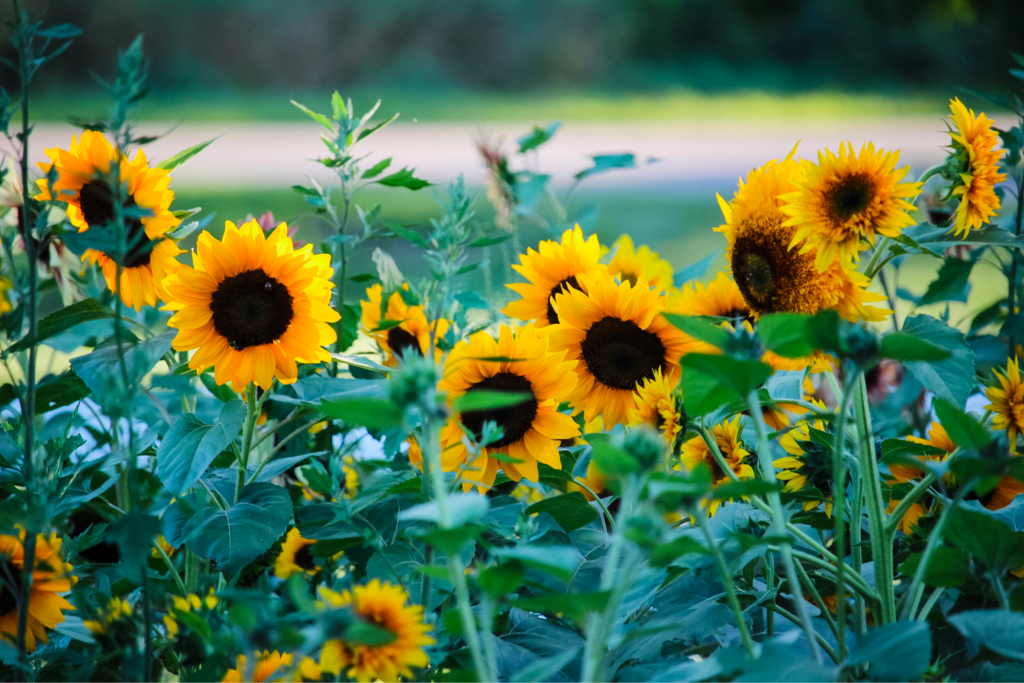
Sunflowers are iconic and loved by gardeners for their cheerful appearance and numerous benefits. When grown in raised garden beds, they can act as a focal point, bringing color and texture to your flower garden. Their tall stalks, reaching up to six feet, add a striking vertical element to the landscape, creating a beautiful corner garden bed. Also, sunflowers are pollinator magnets, attracting bees and butterflies to your garden.
When planting sunflowers in your raised bed, give them enough space to grow. Since they can tower over other plants, allocate at least two feet of space between each sunflower and the surrounding vegetation. Some varieties may require staking for support, so plan accordingly.
Caution: planting sunflowers too close to other plants can have an allelopathic effect that inhibits the growth of nearby vegetables and flowers.
Dahlias
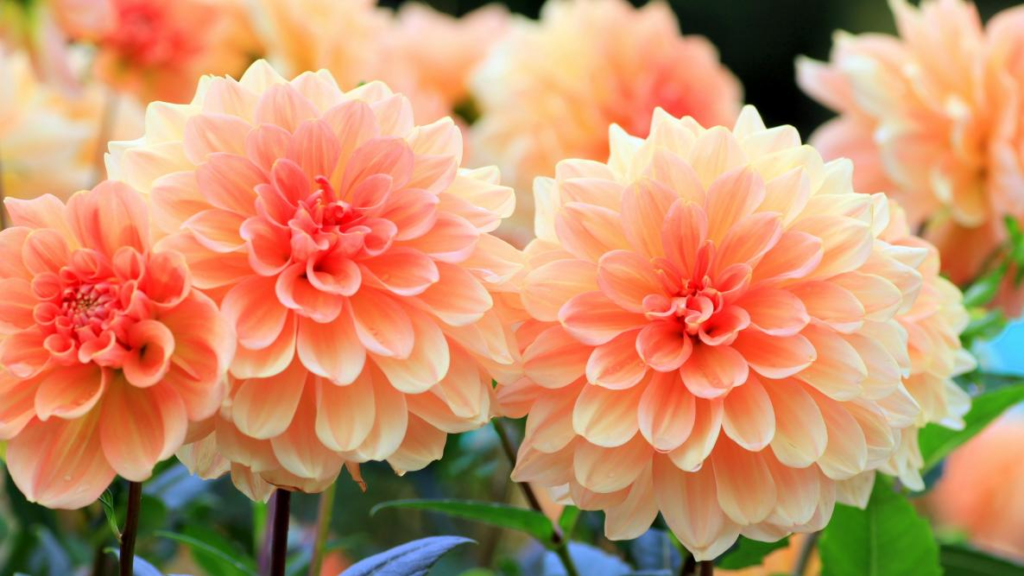
With large, showy flowers and a wide range of colors such as yellow, orange, red, and pink, dahlias effortlessly brighten up any dull area. Dahlias typically grow from tuberous roots, which thrive in raised beds due to the improved drainage and aeration. These flowers are known for their long stems, each adorned with multiple blooms, making them perfect for eye-catching bouquets.
Dahlias are also a delight throughout the summer and well into the fall season, providing a colorful display that will awe any garden enthusiast. Whether you choose to plant them in mixed borders or as stand-alone features, these magnificent flowers are sure to create a warm and inviting atmosphere in your garden.
In terms of care, dahlias require fertile, moist but well-drained soil, as well as a sunny and sheltered spot. Additionally, taller varieties may need staking to support their impressive blooms. In preparation for winter, dig up the tubers and store them in a frost-free location, such as a greenhouse or shed. When spring arrives, bring them back to life in early April and transplant them into your garden from May onwards.
Cosmos
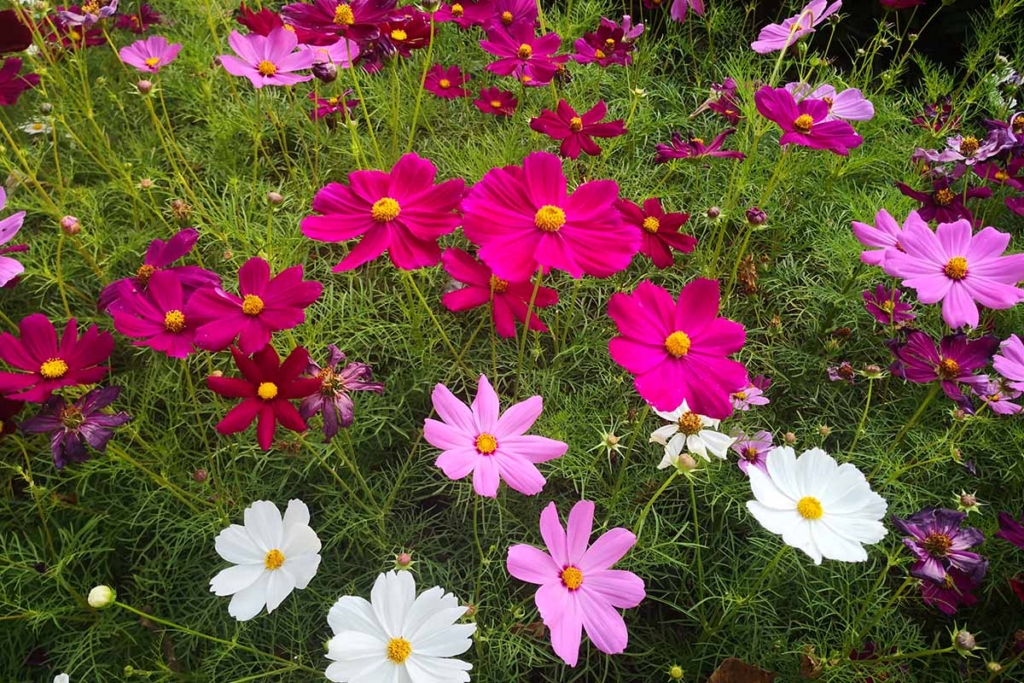
Cosmos is one of the ideal flowers to plant in raised garden beds for those who are just starting out on their gardening journey. These charming daisy-like flowers are not only easy to grow from seeds but also add a pop of color to any garden. With their long, slender stems, cosmos are perfect for creating lovely floral arrangements.
One of the great advantages of planting cosmos in raised beds is their compatibility with other vegetables. By planting cosmos with vegetables, you can create a visually appealing and productive garden space. Moreover, cosmos attract beneficial insects, such as predatory bugs that feast on harmful sap-sucking pests.
Taking care of cosmos is relatively straightforward. They prefer growing in slightly dry soil, so watering during extended droughts is sufficient. Ensure they receive full sun, but consider providing some afternoon shade during hot summers. Last but not least, cosmos thrive in well-draining soil rich in organic matter. This eliminates the need for fertilizers.
Salvia
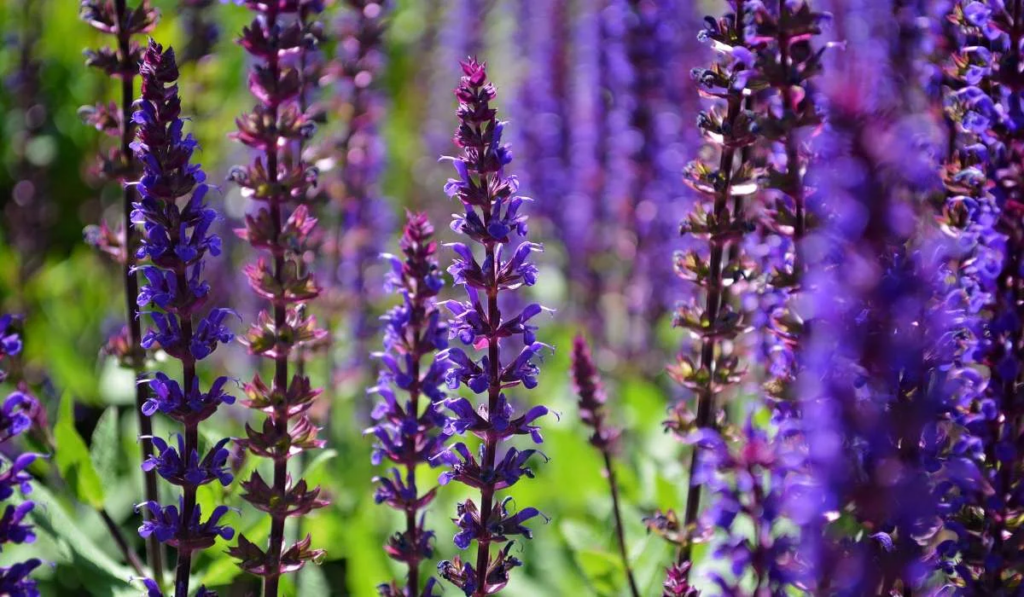
Salvia, also known as ornamental sage, is a must-have for any raised garden bed. With its nectar-rich, aromatic flowers, this plant is a magnet for bees and other pollinating insects, making it a beneficial addition to any garden ecosystem. The long-lasting blooms and fragrant leaves make salvia a delight to behold.
As an herbaceous perennial, Salvia is very hardy. This makes Salvia an ideal choice for gardeners looking for low-maintenance, reliable plants. It can thrive in a wide variety of soil types, but moist, well-drained soil with a neutral pH is the ideal environment. Although salvia can endure partial shade, it prefers a sunny spot in your raised garden bed.
Pro tip: To ensure its survival in harsh frost, keep a close eye on salvia and consider taking cuttings if needed. Once established, this perennial becomes quite drought-tolerant, making it a resilient addition to your raised garden bed.
Recommended cultivar: Salvia nemorosa ‘Caradonna’ features enchanting violet flowers and is a perennial variety, adding a splash of color to your garden year after year.
Sarcococca
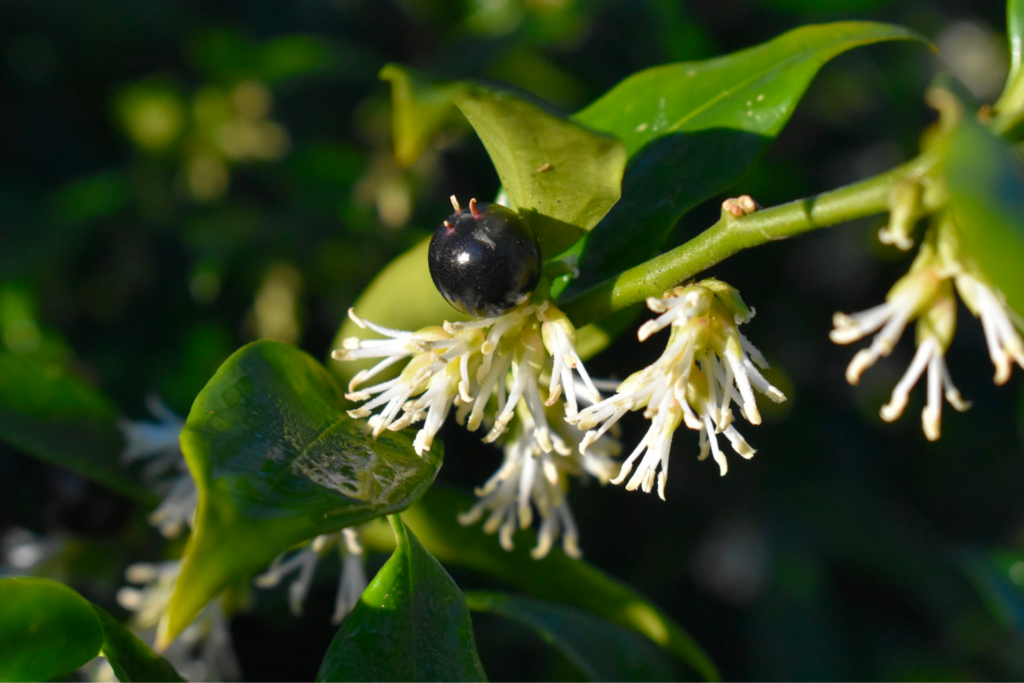
Sarcococca, commonly known as sweet box or winter box, is a gem of a plant for raised garden beds, especially in colder climates. It’s renowned for its ability to produce exquisite winter flowers, which release a captivating fragrance that lingers throughout the garden.
Sarcococca will attract honeybees as early as February, adding to its appeal as a pollinator-friendly choice for your raised bed.
Sarcococca thrives in shaded areas, making it an ideal choice for raised beds that receive limited sunlight. Its evergreen nature ensures that your garden remains vibrant even during the winter months. The plant prefers moist but well-drained, neutral soil, making it essential to provide suitable conditions for optimal growth.
Ligularia
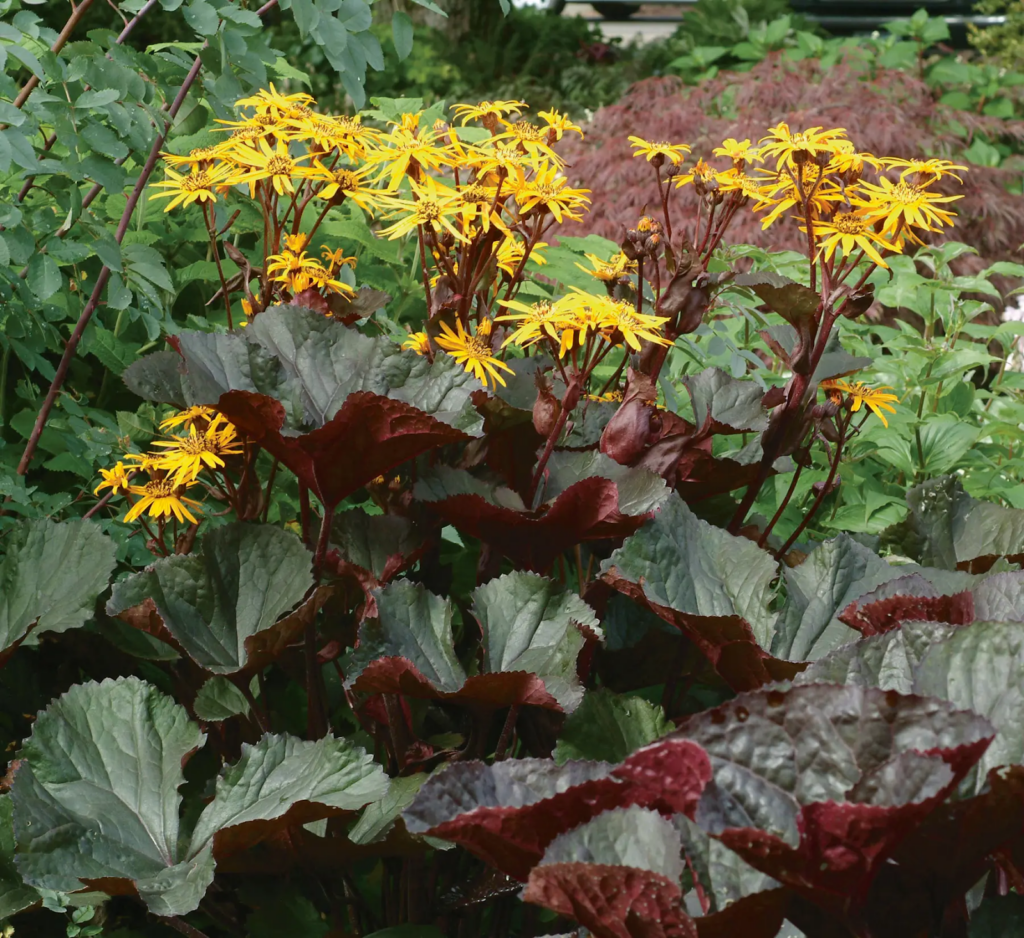
Ligularia dentata ‘Desdemona’ is an exceptional option for raised garden beds, especially if your bed has poor drainage. With its rich, golden blooms, this leopard plant adds a touch of elegance to any garden. However, to ensure its thriving growth, Ligularia requires a very fertile, moisture-retentive soil. For your raised bed, use loamy soil enriched with plenty of organic matter (one bucket per square meter).
In regions with dry climates, you may need to line the raised bed with lightly perforated polythene to impede drainage and maintain sufficient moisture for the Ligularia to flourish. Another challenge faced by this plant is slugs, which can cause damage. However, in raised beds, you can easily defend against them by mulching with non-toxic slug-repelling granules and occasionally treating with anti-slug nematodes. Loamy, moist soil is the best for Ligularia, especially soil types that can tolerate a range of pH levels from acidic to alkaline to neutral.
Roses
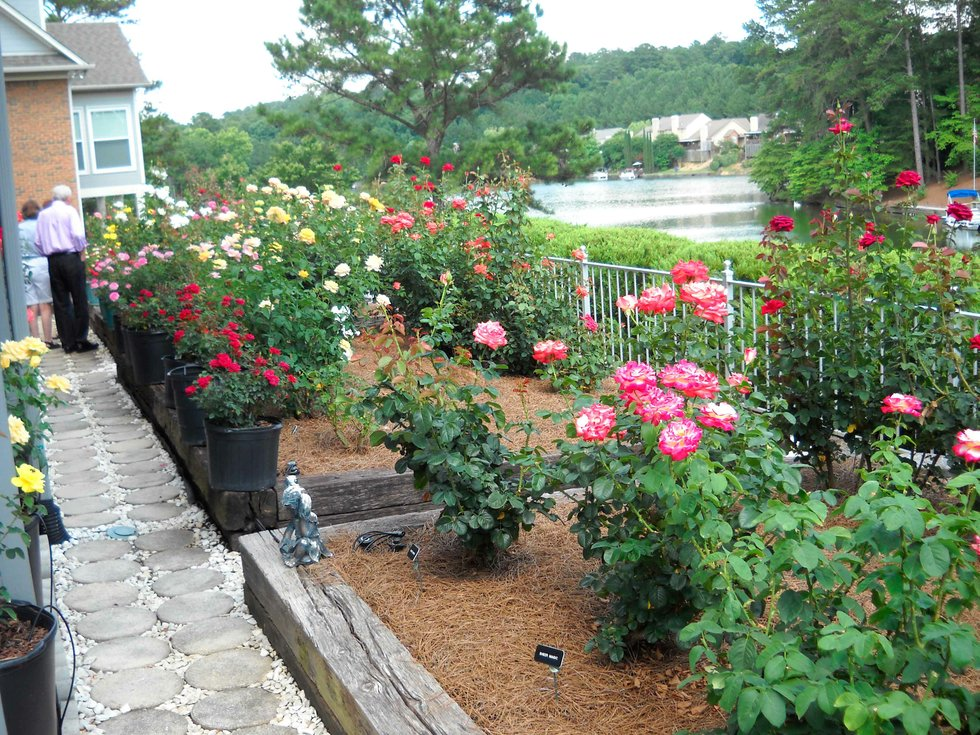
Roses represent elegance and beauty, and that’s why they’re so popular among gardeners. When planted in a raised bed, roses relish a warm, sunny spot, which promotes healthier growth and more abundant blooms. With a vast array of rose varieties available, finding one that suits your raised bed’s location and aesthetic preferences won’t be a challenge. The elevated position of the raised bed keeps the roses slightly warmer than at ground level, offering protection from frost during colder months.
Soil type is a crucial consideration when planting roses in a raised bed. You need to use well-drained, but moist soil with a neutral pH. One delightful cultivar to try is Rosa ‘Sweet Dream,’ a dwarf shrub with gently fragrant flowers that bloom throughout the summer and into autumn, adding a touch of romance to your garden.
Camellias
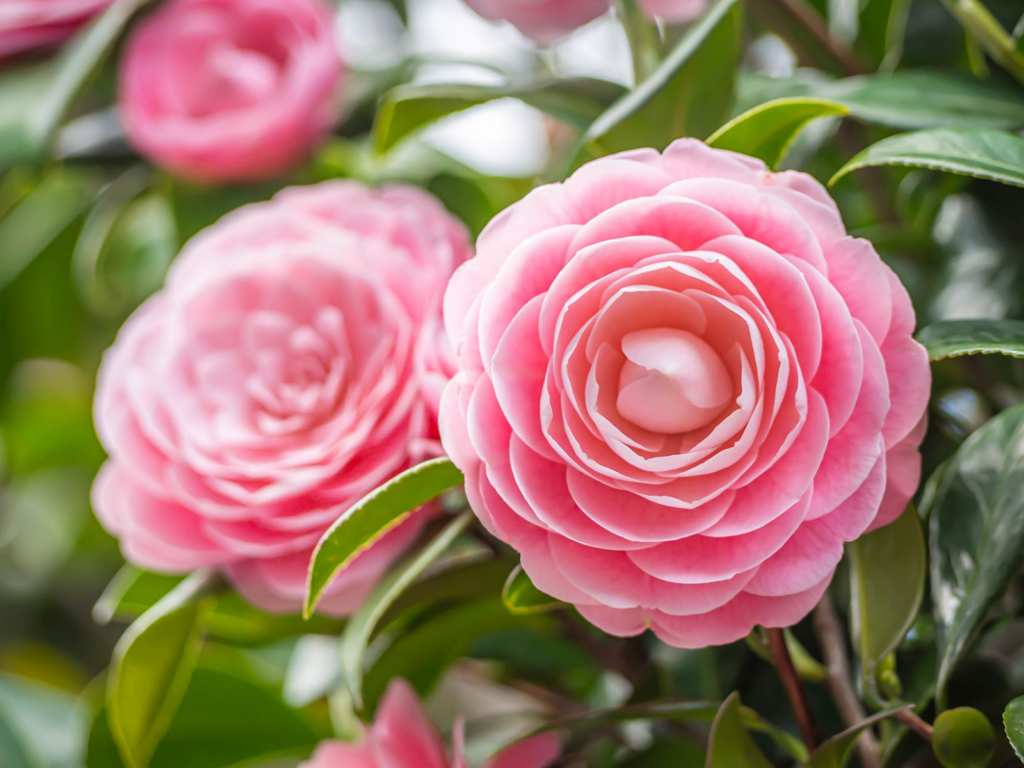
Camellias are elegant, evergreen shrubs known for their striking blooms and glossy foliage. These spring-flowering wonders can brighten up shady spots in your garden with their captivating colors. Camellia japonica ‘Nuccio’s Gem’ is an excellent choice for raised beds, as it thrives in acidic soil, which can be easily achieved by using sulfur dust in the neutral soil.
Moderate shade and moist, well-drained, acidic soil are essential for the successful cultivation of Camellias. While raised beds can be dry during late summer and autumn, watering during these periods will ensure your Camellias form flower buds and bloom beautifully. Try the charm of Camellia japonica ‘Nuccio’s Gem’ with its bold double white spring flowers.
Color Your Garden Now!
Planting flowers in your raised garden bed is a delightful way to elevate the beauty of your outdoor space. Whether you have a sunny spot or a shady nook, there will be perfect flowers to plant in raised garden beds. With the right combination of flowers and plants, your garden will become more vibrant and stunning, bringing joy and admiration to all who see it.
In case you need a place to buy high quality flowers and plants, check out Nature Hills. They will get you covered.
So, get your hands dirty, and start your raised flower bed ideas with these ten gorgeous flowers today!

